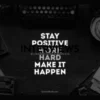So, You Want to Get Clothes Made? Let’s Talk Dollars and Sense (and Seams)
Ever dreamt of seeing your designs on a runway, or stored in your online boutique? Producing clothes looks glamorous but requires more than a sewing machine and a dream. Before sketching your ideas, let’s get real about the costs involved.
Decoding the Cost of Creation: From Fabric to Finished Fit
Money is vital in manufacturing. Understanding costs upfront helps avoid financial disasters in fashion. Let’s examine where your money goes when you decide to create clothing.
- Material Matters (and Costs): Fabric is vital to your garment. Prices can range from $1 to $40 per yard. Factors affecting price include quality, quantity, and source. Imported silk costs more than local cotton.
- Pattern Drafting: The Blueprint of Your Design: Patterns are crucial before sewing. Drafting these can cost between $200 and $2000. Unique designs increase costs, similar to blueprints for buildings.
- Labor: Surprisingly Affordable (Sometimes Shockingly So): Labor costs for garment assembly can be low. Suppliers often charge $1 to $2 for cutting and sewing. This raises questions about garment worker wages globally.
- Production Costs for a Clothing Line: Buckle Up: Launching a full clothing line requires significant investment. Expect costs between $8,000 and $40,000 for production. This covers design and manufacturing of several items.
- The Humble Hoodie: A Cost Case Study: Even a basic hoodie has varying costs. Standard manufacturing ranges from $5 to $20. Add customizations, and prices will rise further.
- Initial Design Investment: From Doodles to Digital: You need designs before production. Budget between $200 and $7,000. Costs depend on hiring a designer or using DIY software like Adobe Illustrator.
- Printing and Screen Printing: Making Your Mark: Factor in printing costs when adding designs. Screen printing costs vary by complexity and order size. Simple designs cost less than multi-layered prints.
Minimum Costs: Entry Points Vary Wildly
Starting small? Great! But “small” still requires money. Even entering the clothing business includes minimum financial hurdles.
- Online Store Minimums: Launching an online store isn’t inexpensive. Expect costs from $5,800 to $17,000, covering websites and basic inventory.
- Retail Physical Outlet Minimums: Opening a physical store demands a larger investment. Costs range from $64,500 to $131,300, including rent and staffing.
Need a Hand (or a Seamstress)? Hiring Help to Make Clothes
Sewing isn’t for everyone. Scaling your vision often means getting help. Finding the right person is key to bringing your clothing ideas to life.
- Freelance Platforms: Your Global Talent Pool: Use platforms like Upwork and Fiverr to find designers and tailors. These sites connect you with skilled individuals for custom clothing creation.
- Local Seamstress: The Neighborhood Expert: For small runs or unique designs, hire a local seamstress. They offer personalized service while supporting local businesses.
- Designer Hourly Rates: Beginner to Guru: Designer fees vary widely based on experience. Beginners may charge $25 per hour while seasoned experts can demand $80 or more.
- Decoding the Clothing Creator Titles: Tailor, Seamstress, Dressmaker, Pattern-maker – Oh My!: These terms can confuse. Tailors focus on menswear alterations, dressmakers on women’s garments, and seamstresses on sewing. Pattern-makers create patterns for cutting fabric.
- Payment Structures: Flat Fee or Hourly Hustle?: When hiring for custom clothing, understand their payment structure. Clarify if they charge a flat fee or hourly. Transparency prevents billing surprises.
Manufacturing Methods: From One-Offs to Bulk Orders
How do you actually produce clothes? You have choices based on needs and scale.
- Custom Clothing Manufacturers: On-Demand Designs: For unique pieces, use custom clothing manufacturers. These platforms let you design individual items with many options.
- Wholesale Clothing Manufacturers: Bulk is King (for Cost Efficiency): For larger quantities, wholesale manufacturers are vital. They produce bulk items, decreasing per-unit costs.
- Made-to-Order Magic: Single Piece Possibilities: It is possible to manufacture just one clothing piece. This is known as “made-to-order,” ideal for prototypes or exclusive pieces.
- Cheapest Manufacturing Hotspots: Global Sourcing Insights: To save costs, look to affordable manufacturing regions. Countries like China and India are popular for lower labor costs but require ethical considerations.
Brand Building 101: Launching Your Clothing Empire
You want more than just designs; you want a brand. Building a clothing brand requires a strategic approach.
- Business Plan: Your Roadmap to Riches (or at least Revenue): Create a solid plan for your clothing business. This serves as your success roadmap outlining goals and strategies.
- Target Market: Who Are You Dressing?: Identify your target market. Know who you aim to reach with your clothing. The ideal customer influences design and marketing.
- Business Model: Print-on-Demand Power: Consider various business models. Print-on-demand minimizes upfront inventory risks for startups.
- Online Storefront: Your Digital Runway: Create an online store for your clothing. E-commerce is vital today. Ensure it’s user-friendly and appealing.
- Marketing Magic: Get Your Brand Seen: Promote your clothing brand online through social media, ads, and influencer partnerships.
The Price Tag of Brand Dreams: Start-Up Costs Unveiled
What does it cost to launch a clothing brand? The answer is complex: it varies significantly.
- Cost Range: From “Pocket Change” to “Princely Sum”: Starting a brand can cost from thousands to tens of thousands. Costs stem from production, design, marketing, and operations.
- Cost Components: The Big Four (and More): Essential expense categories include production, design, marketing, and operations.
- Minimum Startup Capital: Online vs. Retail Reality Check: Minimum start costs? For online stores, expect $5,800-$17,000; for retail locations, budget $64,500-$131,300.
- minimum.
- Large-Sized Clothing Line Costs: Scaling Upwards: Dreaming bigger? A large clothing line needs a bigger investment. Costs range from $25,000 to $50,000 and possibly more.
Operational Expenses: The Unseen Budget Eaters
Beyond setup, ongoing operational costs can eat your budget quickly.
- Website Woes: Hosting & E-commerce Platform Fees: Your online store needs a home. Hosting, domain registration, and e-commerce platform fees are ongoing costs.
- Marketing & Advertising: The Ongoing Visibility Game: Marketing isn’t a one-time task. Continuous marketing and advertising incur costs. Track your ROI carefully.
- Shipping & Fulfillment: Getting Clothes to Customers: Shipping costs are unavoidable. Include the shipping expenses to customers in your budget. The costs depend on order volume and distance.
- Payment Processing Fees: Every Transaction Has a Price: When processing payments, expect payment fees. These small percentages add up quickly.
- Warehousing: Inventory Storage Solutions (or Costs): If holding inventory (not using print-on-demand), warehousing costs arise. Storage space isn’t free.
Cost-Cutting Strategies & Legal Line Items
- Print-on-Demand: The Inventory Escape Hatch: Print-on-demand eliminates upfront inventory investment. You pay for production when a customer orders.
- Legal Eagles: Trademarks and More: Don’t overlook legal expenses. Trademarks protect your name and logo. Investigate other legal matters too.
- Scalability: Planning for Growth (and its Price Tag): As your brand expands, invest in resources to scale operations. Prepare for this in your budget.
- Indian Rupee Reality Check: Startup Costs in Rupees: In India, starting a clothing brand can range from ₹5 lakh to ₹10 lakh.
Profitability: Show Me the Money!
Is the clothing industry truly profitable? Let’s explore the profit margins.
- Profit Margin Averages: Retail Realities: Profit margins in clothing retail generally range from 40% to 60%. However, this varies due to brand positioning.
- Luxury Lane: Higher Margin Heaven: Luxury brands enjoy higher margins. Prestige and premium pricing boost profitability.
- Mass-Market Margins: Lower but Still Lucrative: Mass-market apparel has lower margins but can still generate profit through volume sales.
Beyond the Basics: Extra Considerations for Clothing Creators
Creating clothing involves more than just costs. Let’s examine other key aspects.
- Designing Details: From Sketch to Stitch: Create detailed designs. Sketches, technical drawings, and fabric choices communicate your vision to manufacturers.
- Quality Control: Maintaining Brand Standards: Quality control is essential. Ensure manufacturer standards meet your expectations. Samples and inspections matter.
- Minimum Order Quantity (MOQ): Manufacturer Mandates: Understand Minimum Order Quantities (MOQs). Some manufacturers require a minimum number of garments per order.
- DIY Design Platforms: Spreadshirt and Similar Services: Platforms like Spreadshirt let you create custom clothes with your designs. Ideal for small-scale projects.
- Sustainability: Fashion with a Future: Consider a sustainable clothing line. Eco-conscious consumers value sustainability. It can distinguish your brand.
- Licensing Legitimacy: Seller’s Permit Essentials: Legal compliance is important. In California, you may need a seller’s permit to collect sales tax. Learn local laws.
- LLC or Not LLC: Legal Structure Decisions: An LLC isn’t mandatory but offers liability protection. It separates personal and business finances. It is a wise choice for many.
The “Me-Made” Dilemma: Worth the Effort?
Is making clothes yourself worthwhile? Let’s weigh the pros and cons.
- Fabric Finesse: Potentially Higher Quality: “Me-made” clothes can use higher-quality fabrics than many store-bought options.
- Longevity & Value: Clothes That Last: Better materials and construction mean handmade garments last longer. This offers superior value over time.
- Production Price Points: Can Be Surprisingly High: Production costs for handmade items can escalate quickly, especially factoring in your time.
- Mistake Mayhem: Time and Material Waste: Mistakes are part of learning but can be costly in sewing. Wrong cuts waste time and expensive fabric.
Hidden Costs: The Unseen Environmental Price Tag
Beyond financial expenses, there are hidden environmental costs tied to clothing production and use.
- Landfill Legacy: Textile Waste Troubles: Textile waste causes major issues. A significant portion of municipal waste is textiles. The average American discards around 81 pounds of clothing yearly.
- Who Pays the Price?: Taxpayers and Consumers: Society bears the cost of textile waste through taxes for waste management or environmental damage costs.
Design Protection: Guarding Your Creative Garments
Protecting designs is crucial. How do you safeguard your creative work?
- Copyright: Artistic Design Defense: Copyright protects artistic work including clothing designs, covering aesthetic aspects primarily.
- Trademarks: Brand Identity Protection: Trademarks safeguard brand logos and labels on clothing products. They protect your identity.
- Patents: Unique Appearance Protection (Limited): Patents can protect unique product appearances. However, fashion patents are often less common than copyright or trademark protections.
Trademark Costs: Budgeting for Brand Protection
Trademarking your brand carries costs. Let’s detail this financial aspect.
- USPTO Application Fee: $350 Per Class: Filing a trademark with the USPTO costs $350 per goods or services class. Clothing falls into a specific class.
- Additional Fees: Watch Out for Extras: Be aware of potential extra fees from application issues like missing information or excessive text.
- Renewal Fees: Trademark Longevity Costs: Trademarks require periodic renewal and fees every 10 years. This is an ongoing cost for protection.
Design Software: Digital Tools of the Trade
- Adobe Illustrator: The Industry Standard Design Dynamo: Adobe Illustrator is the industry standard for fashion design, especially for vector drawings and 2D patterns. It comes with subscription costs.
Canva and Clothing Designs: Design Tool Insights
- Original Designs Required: Canva Caveats: With Canva for clothing designs, you must create original works. Using pre-made elements must be avoided for commercial purposes.
- No “As-Is” Element Sales: Canva Usage Limits: Selling individual Canva elements directly on products is prohibited. Your designs must incorporate substantial original work.
- Print on Demand Compatibility: Canva’s Strength: Canva pairs well with print-on-demand services. You can create designs in Canva for printing on products like t-shirts.
Extra Nuggets of Wisdom: Bonus Tips for Aspiring Apparel Architects
- Define Your Needs and Goals: Clarity is Key: Clearly define your needs before starting. What are your hopes for your clothing venture? This clarity guides decision-making.
- Networking Nirvana: Industry Event Engagement: Network actively. Attend industry events, fashion shows, and trade fairs for valuable connections.
- Referrals and Reviews: Vetting Your Fashion Partners: Seek past client referrals when hiring designers or manufacturers. Feedback offers helpful insights into reliability.
- Creative Collaborations: Artistic Alliances: Consider partnerships with artists for unique designs. Collaborations foster fresh perspectives and creativity.
- Fashion School Connections: Alumni Networks: Contact local fashion design schools. Their alumni networks can be valuable for talented designers.
The Age-Old Question: Make or Buy? A Financial Face-Off
- Labor Costs Lean Towards Buying (Usually): Is making clothes more economical than buying? Likely no. Labor is a substantial expense. If a store-bought garment matches the fabric cost, labor costs have been minimized somewhere in production.
- DIY Can
- Be Cheaper (If You’re Diligent): Sewing your own clothes can save money, especially if you are skilled. However, consider your time and mistakes. It is not always the cheapest choice.
Side Hustle Sewing: Profit Potential in Handmade Apparel?
- Passion Project to Profit Stream: Side Hustle Success: If you love fashion and sewing, turn your skills into a side hustle. This can express your creativity and earn extra income. Explore Etsy or local craft fairs to start.
Starting a Brand on a Shoestring Budget: Money-Minimal Models
- Dropshipping & Print-on-Demand: Low-Cash Launchpads: Want to start a clothing brand with little cash? Focus on dropshipping and print-on-demand models. These cut upfront costs by removing inventory.
- E-commerce Edge: Business Model Benefits: These models fit e-commerce well. They allow global reach without large investments.
- Customer Service Focus: Building Brand Loyalty on a Budget: When funds are low, prioritize customer service. Trust and loyalty matter for long-term success, especially when starting.
- Dropshipping Demystified: No Inventory Headaches: Dropshipping means no inventory for you. The supplier takes care of storage and shipping.
- Print-on-Demand Perks: Pay-as-You-Go Production: Use print-on-demand for custom products. You pay only when orders come. This lowers risk and upfront spending.
So, making clothes is quite a journey. It mixes creativity, business skills, and smart spending. Whether dreaming of a fashion empire or a side hustle, knowing the costs is key. This understanding is your first step to success. Now go create wisely!





